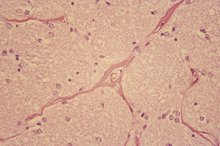What Causes Calcium Deposits on the Brain?
Calcium deposits on the brain or cranium calcification are more common than one might think. They are caused when calcium in the bloodstream is not absorbed by the body and is deposited on the brain. There can be many different causes of calcium deposits on the brain. However, they usually go unnoticed and cause no serious problems.
Toxoplasmosis
Toxoplasmosis is a serious infection that is caused by a parasite (Toxoplasma gondii) found in cat feces. This condition usually does not affect a healthy adult. However, a pregnant woman can contract this parasite when cleaning a cat’s litter box, and it can be very dangerous for a fetus, potentially causing damage to the brain or eyes. This type of congenital toxoplasmosis can cause significant calcium deposits on the brain. The calcium deposits may look like tiny white flecks in the brains cortex or linear streaks on the basal ganglia.
Meningioma
Causes of Fluid on the Brain
Learn More
According to the Mayo Clinic, meningiomas are tumors that occur on the meninges (the outer lining) of the brain. Most meningiomas are benign, meaning that they are not cancerous; however, on rare occasions they can be malignant (cancerous). Calcification or calcium deposits sometimes occur on these tumors, but are more likely to be seen on non-cancerous tumors rather than cancerous ones.
Aneurysm
An aneurysm is caused when an artery has a weak spot that causes a widening or enlarging of a blood vessel. An aneurysm that has been present in the brain may start to show calcifications. The calcifications on the aneurysm will have arches or circle-shaped calcifications. However, calcium deposits on aneurysms of the brain occur in only 1 percent of aneurysm cases. Calcium deposits on an aneurysm do not make it any more or any less dangerous.
Related Articles
Writer Bio
Kristie Jernigan is a health writer with over 17 years of experience as a medical social worker. She has worked mainly with the elderly population and with children. She holds a Bachelor of Science in psychology and early childhood from East Tennessee State University and a Master of Science in health care administration and gerontology from the University of Phoenix.









